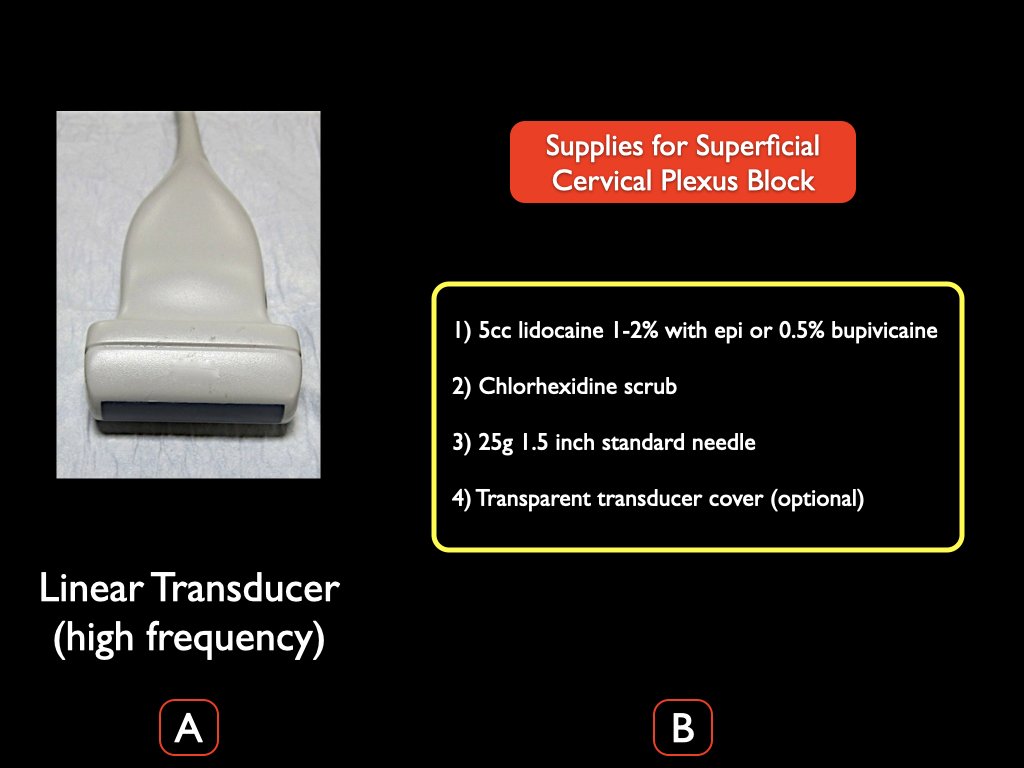A. Place the transducer in a transverse orientation to the neck at the superior portion of the thyroid cartilage. Note the classic ultrasonographic landmarks; CA= carotid artery; IJ= internal jugular vein; SCM= sternocleidomastiod muscle
B. At the level of the superior portion of the thyroid cartilage, slowly slide the transducer laterally. Note the tapering of the SCM muscle and the levator scapulae muscle (LSM) just below. The superior cervical plexus (SCP- denoted by the blue arrowheads) is the group of hyperechoic structures between the SCM muscle and LCM.




